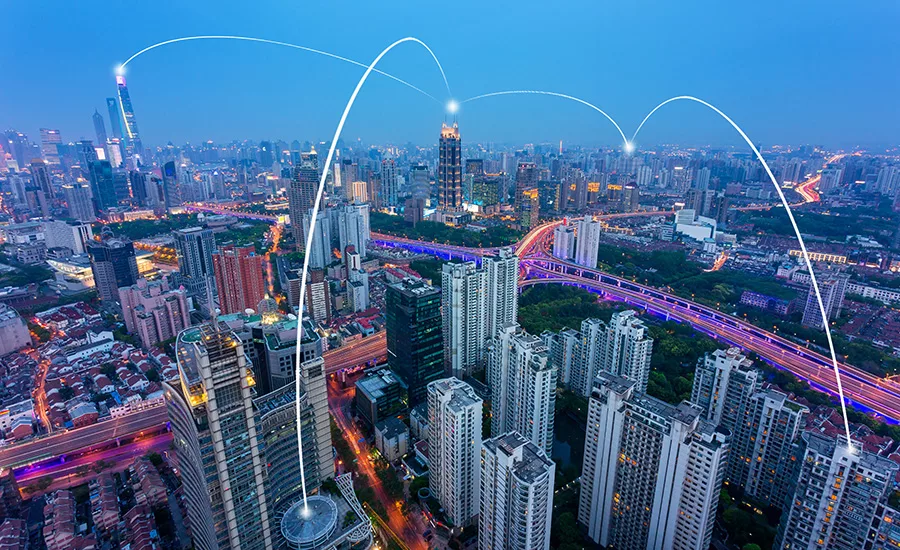Can We Be Smarter Than The Smart Cities We’re Building?

Imagine a world where everything is connected. All information and communication technologies are integrated into a single, consolidated platform. With the rapid increase in smart city capabilities, this idea may soon become our reality. The smart cities vision is to seamlessly integrate information and communication technologies with the internet of things (IoT) to increase efficiency, reduce costs, and enhance communications between networks. The end goal is to enable cities to leverage their IoT devices to create a more cohesive and connected environment.
Songdo, South Korea has already begun implementing smart city features. Key features include automatic climate control, computerized access, and electronic sensors that enable the city’s so-called “brain” to track and respond to the movement of residents. As for the US, many cities are working diligently to incorporate smart city features. For instance, some cities have installed sensors in their water mains to identify costly and wasteful water leaks, others are conducting computer-based analysis of live video feeds in an effort to aid law enforcement and solve crimes; yet other cities are implementing sophisticated traffic flow and available parking space prediction and management systems.
As more locations embark on adopting the smart city vision, reliance on data accuracy and speed of transmission will continue to grow, allowing all infrastructures to be connected through a single network. Although this single network vision has many benefits, it also creates a single path, through which a threat can infiltrate the cities’ entire network; and if that happens, repercussions may be catastrophic.
The recent WannaCry and Petya outbreaks serve as proof of the destruction a single malware can inflict on critical infrastructures. Now imagine the amount of damage an attack like that could inflict on a smart city. Cybercriminals are becoming more creative and strategic when it comes to their attack methods. They target networks most able to rapidly propagate the attack and simultaneously unleash the most chaos; think of hospitals, financial institutions, schools, emergency services and public networks. Clearly, for the smart city idea to safely become a reality, smart and effective protection of IoT networks from cyber-attack must be a priority.
Smart initiatives have already fallen victim to the ploys of cybercrime, causing immense amounts of damage and confusion. In December 2015, the Ukraine suffered a massive grid cyber-attack, this grid attack led to interruption of electricity and water supplies to tens of thousands of homes in the middle of a freezing winter. The repercussions were both frightening and dangerous, and showed the impact that an isolated attack can have, when targeted at a critical infrastructure. Smart initiatives connect all infrastructures, and as such enables would-be cyber criminals to wreak havoc on a much larger scale. One outdated patch can easily provide the ‘back-door’ needed by a cyber-threat actor to infect a city’s entire network, including ALL critical infrastructures. With new technology comes new responsibility—and with that, more security responsibility.
In order to address this increasingly complex challenge, smart cities must implement a robust security system to protect essential data and digital assets. What is needed is seamless protection of networks against threats before threat actors have the chance to strike. A consolidated architecture across network, cloud and endpoints, including mobile, is a solution that will effectively protect smart cities against the next cyber-attack. In today’s reality we cannot afford to passively wait for the next WannaCry or Petya attack to hit.
Relying on just a firewall to provide a safe and predictable perimeter is a thing of the past; protection needs to use more than detection and consistently deliver protection. Smart cities are built with the excitement of new - yet still unimagined societal benefits. However, without the proper protection, inhabitants of smart cities will be at risk for a large scale data breach along with malfunctioning critical infrastructures. What we can be sure of is there will be more and more sophisticated cyber-attacks. In a future where smart cities become the norm, how we protect ourselves from the next breach will not only be important for the corporate world, it will also have a big impact on the viability of our physical and personal worlds too.
Looking for a reprint of this article?
From high-res PDFs to custom plaques, order your copy today!







